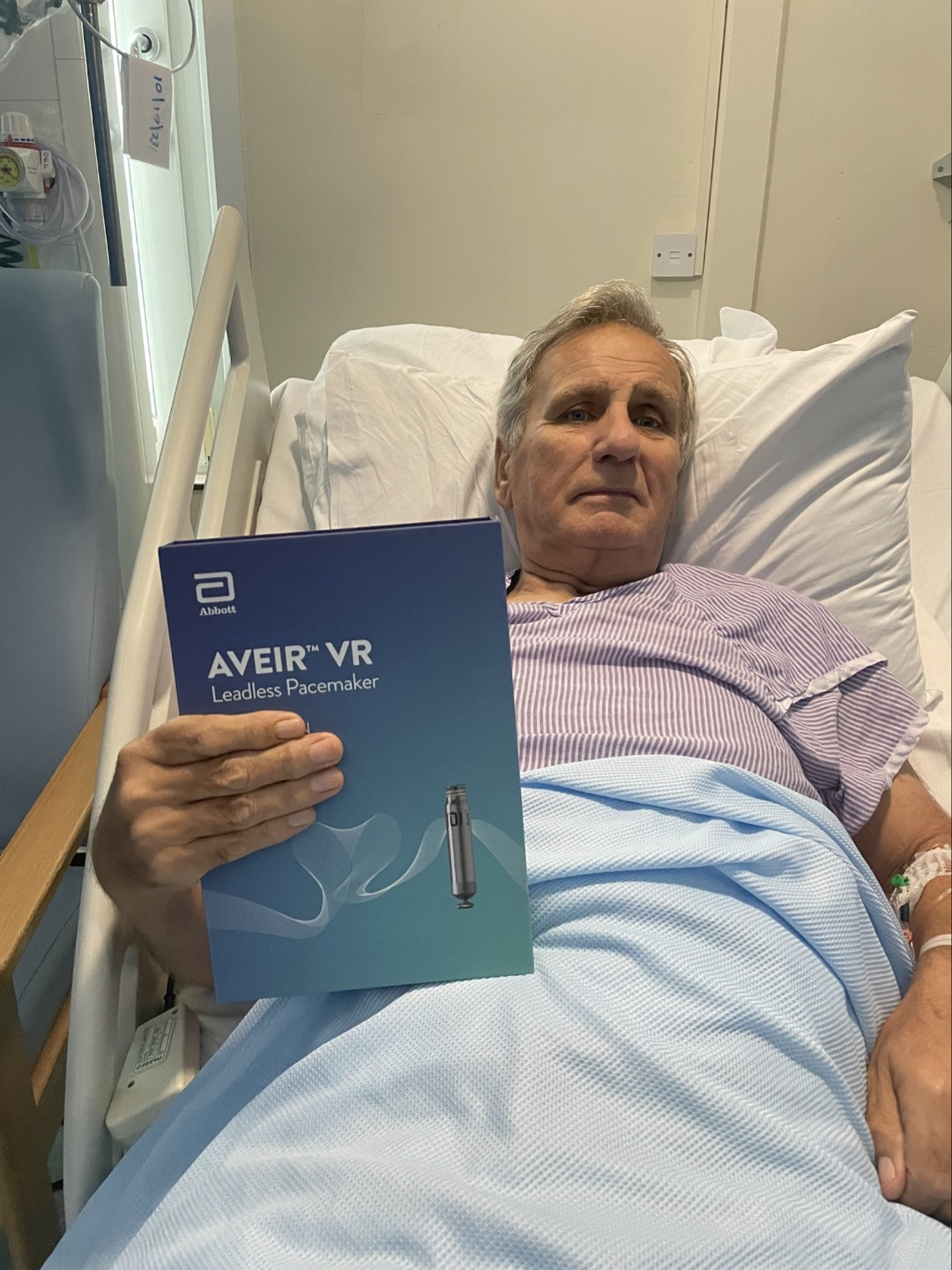Heart experts among first in UK to implant 'pen lid' sized pacemaker
Heart experts at University Hospital Southampton (UHS) are among the first in the UK to fit a patient with an innovative pacemaker the size of a pen lid.
The device, named the Aveir VR leadless pacemaker, is 10 times smaller than standard devices at 38mm and is used to correct slow heart rhythm, known as bradycardia.
It is implanted directly into the heart’s right ventricle – a chamber in the heart that pumps blood low in oxygen to the lungs – via a catheter placed in the inferior vena cava (IVC), the body's largest vein located in the abdomen.
Once it reaches the right ventricle, the device uses innovative technology to map the interior wall of the heart to assess correct positioning before being fixed in place – this helps to reduce the number of repositioning attempts which can damage the heart tissue.
It is then anchored into place by turning the device’s unique spiral tip which also houses a small electrode for sensing and pacing stimulation.
With each heartbeat, the device receives a message indicating whether the device sensed or paced and, if needed, delivers electrical pulses to correct the slow or irregular heart rhythm.
The simple procedure took the Southampton team around 30 minutes to complete.
Bradycardia is a slower than normal heart rate – below 60 beats per minute (bpm) – which means the heart cannot pump enough oxygen-rich blood to the body during normal activity or exercise.
Symptoms can include dizziness, shortness of breath, chronic lack of energy and fainting. It can also cause the brain and other organs to become oxygen-deprived – the condition can be life-threatening without early detection and treatment.
There are more than 1.5 million people in the UK diagnosed with a heart rhythm condition that puts them at increased risk of a stroke, according to data published by the British Heart Foundation earlier this year.
This means that 1 in 45 people in the UK are known to be living with the condition, but most people with an abnormal heart rhythm can lead a normal life if it is properly diagnosed and treated.
Graham Motteram, a retired contract manager from Romsey in Hampshire, is the first patient at UHS to be fitted with the new Aveir pacemaker.
He recently found out he had heart problem following a routine check-up for his diabetes at his local GP surgery. The nurse in charge picked up a high blood pressure reading and after carrying out an ECG was immediately sent to the emergency department (ED) at UHS.

Mr Motteram, 76, said: “I arrived at the hospital and to my worry was rushed straight through with no wait. Once seen in ED I was quickly moved to a ward and after various examinations was told that I would need a pacemaker fitted and was admitted while waiting for the procedure.
“A couple of days later Professor Roberts came to see me and told me about a brand-new device that was now available and thought it would be the right choice for me – the procedure took place 10 days later without a hitch and with no pain at all.”
Mr Motteram returned to the ward shortly after with no adverse effects and enjoyed a meal just a few hours later.
He added: “I stayed in hospital for a further two days before being discharged. It’s been six days since my procedure and I feel better than I have in months!
“I feel very lucky to be the first patient in Southampton to be fitted with this new device and I’m so grateful to Prof. Roberts and the team – they have surely saved my life and looked after me so well before and after the procedure. I hope many more patients can benefit from this in the future.”
The procedure was performed by a team led by Professor Paul Roberts, a consultant cardiologist at UHS.
He said: “The Aveir ventricular leadless pacemaker represents a significant advancement in patient care with leadless pacemaker technology. The battery life of this device has the potential to last for more than 20 years in some patients.
“Furthermore, it is anticipated in the near future we will be able to implant a second device in the top chamber of the heart (atrium), in selected patients which means that a larger group of patients may benefit from this technology.”
The novel pacemaker, developed by global healthcare company Abbott, has also been designed to operate as part of a dual-chamber pacemaker system.
This involves implanting a second device into the right atrium – the heart chamber that receives blood low in oxygen from the body which then empties into the right ventricle – where it will deliver coordinated pacing to the top and the bottom chambers of the heart.
The dual-chamber system is currently being tested for safety and efficacy and it is hoped to be offered to patients in the future upon regulatory approval.
Other features include a battery that has been designed to last up to twice as long as other leadless pacemakers, and the ability for ‘long-term retrieval’ – meaning it can easily be removed for replacement or upgrade as new technology develops without damaging the heart tissue.
"It’s great to see our Aveir VR leadless pacemaker being used at University Hospital Southampton,” said Ross Campbell, general manager for cardiac rhythm management across the UK, Ireland and Germany for the device manufacturer Abbott.
“It has been designed to make the implantation and retrieval processes as seamless as possible for clinicians and provide improvements over existing options which will allow patients to worry less about their condition.”
